
Remote Sensing Techniques to Reveal Ancient Mesopotamian Urbanism
Marc Marín Webb, 2023 Strange-Midkiff Fieldwork Scholarship Recipient
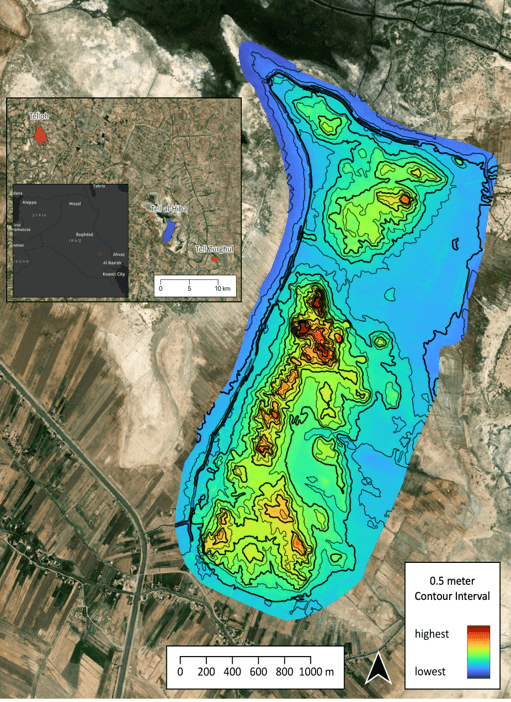
The remarkably preserved surface and subsurface architecture at Lagash, as evidenced by initial drone flights from 2019 to 2023 over Area H (Figure 2), offers a unique opportunity to test remote sensing techniques for reconstructing the urban layout of the city during the Early Dynastic period. In this project, my responsibilities include tracing this architecture through carefully planned flightpaths over selected regions of the site, leading to the creation of orthomosaic images. These flight photographs are subsequently uploaded to the DroneDeploy website for processing. The rectified orthomosaics are then downloaded into QGIS for merging into a single image and processing into the new contour plan for Lagash.
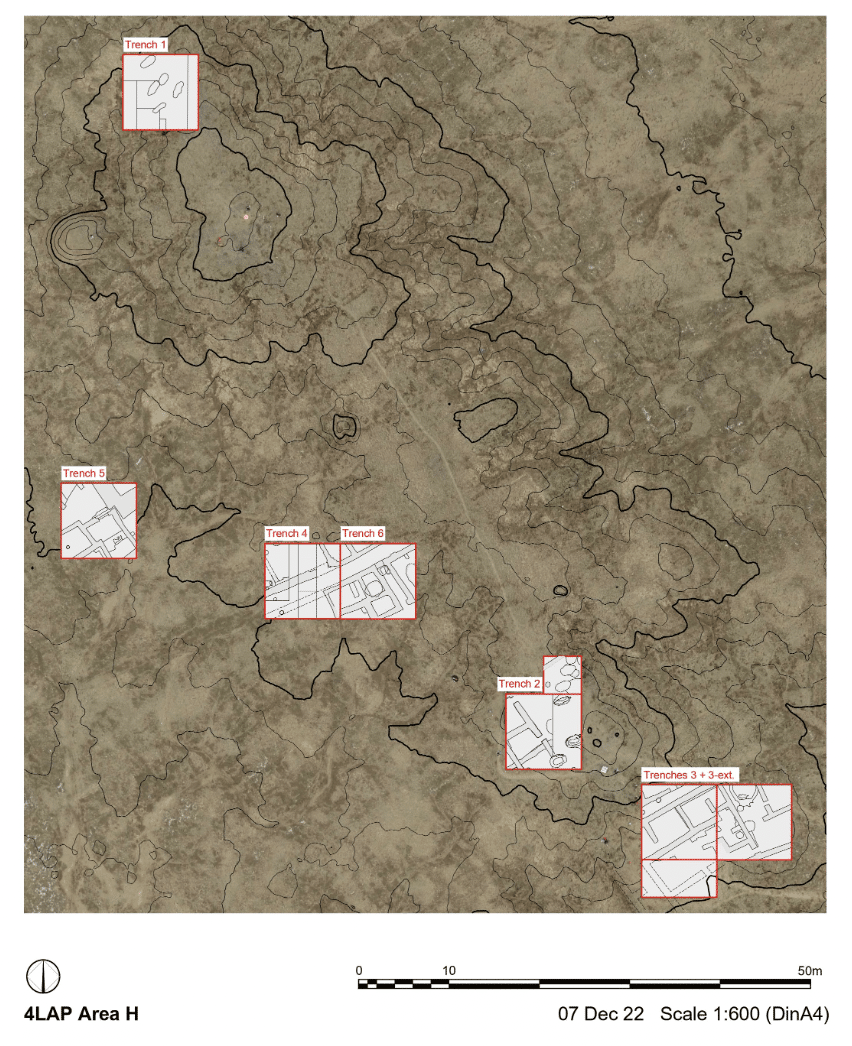
Orthomosaic images generated through DroneDeploy are compared to select those that provide clearer depictions of architectural features. We conduct regular aerial surveys on a daily basis to identify optimal weather conditions for revealing these features. Flights immediately following rainfall prove especially useful for detecting surface and subsurface walls, as differences in soil density quickly become apparent in the aerial photographs. Additionally, drone flights at different times of the day reveal distinct features.Subsequently, orthomosaics are digitized into AutoCAD and QGIS to create vector shapes and poly lines representing identified surface-level architectural elements such as walls, streets, kilns, and drains (Figure3).
Surface-level architectural features are frequently discernible in Tell al-Hiba, both through walking surveys and aerial and satellite imagery. These distinctions arise from variations in soil density, triggering differences in moisture retention levels and salt efflorescences. These variations are prominently visible in the 2022-23 aerial surveys of Area H, where surface and subsurface walls appear as darker shades of brown, and white concentrations of salt.
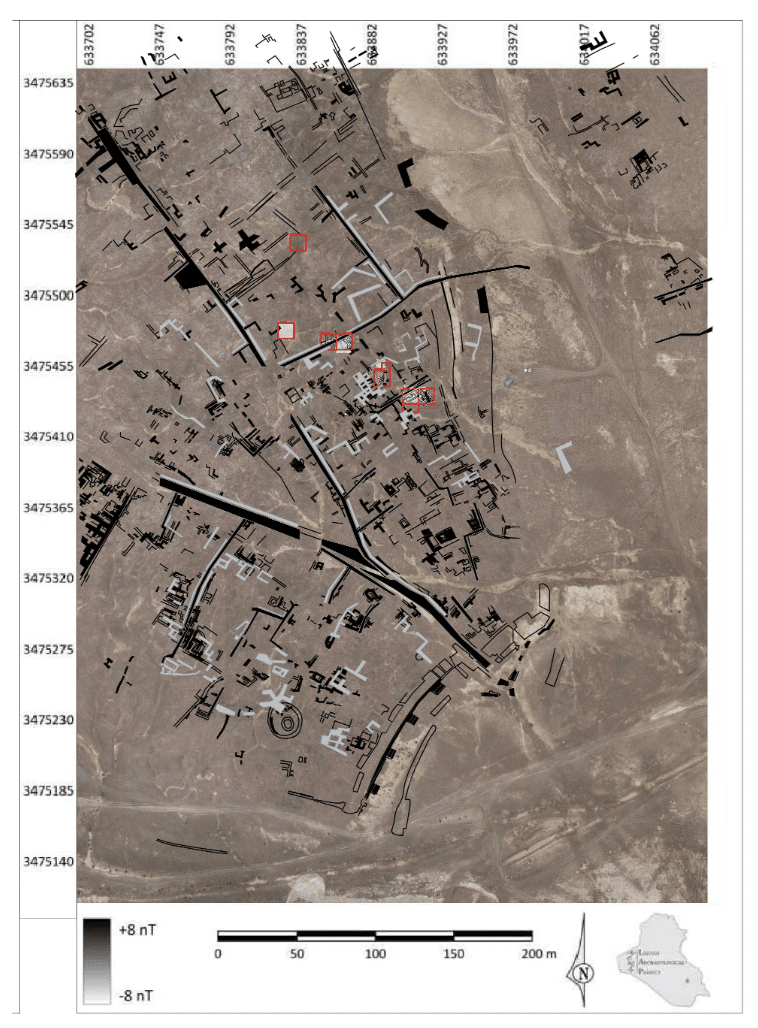
Since 2019, we have identified hundreds of features of similar scale and orientation, yielding significant insights into the density and organization of the urban fabric. This includes the orientation of streets and buildings, room sizes, wall thickness, and types of brickwork. Among these structures, we’ve encountered both small-scale buildings and substantial constructions, including segments of the city wall and building complexes of notable size.
The combined use of geomagnetic surveys and aerial surveys conducted over the past four years provides a snapshot of the urban fabric in Area H (Figure 4). While the precise dating of most of these structures remains uncertain, we can begin to draw certain conclusions from the data obtained. This area of the site appears to have been densely populated, featuring both small-scale and monumental architecture, as indicated by walls of varying widths and the differing scales of rooms and courtyards between them. Most sub-surface architectural traces identified in the aerial survey consist of scattered structures, preventing the reconstruction of entire buildings. Nevertheless, they are primarily aligned and oriented in accordance with the neighborhood’s main streets.
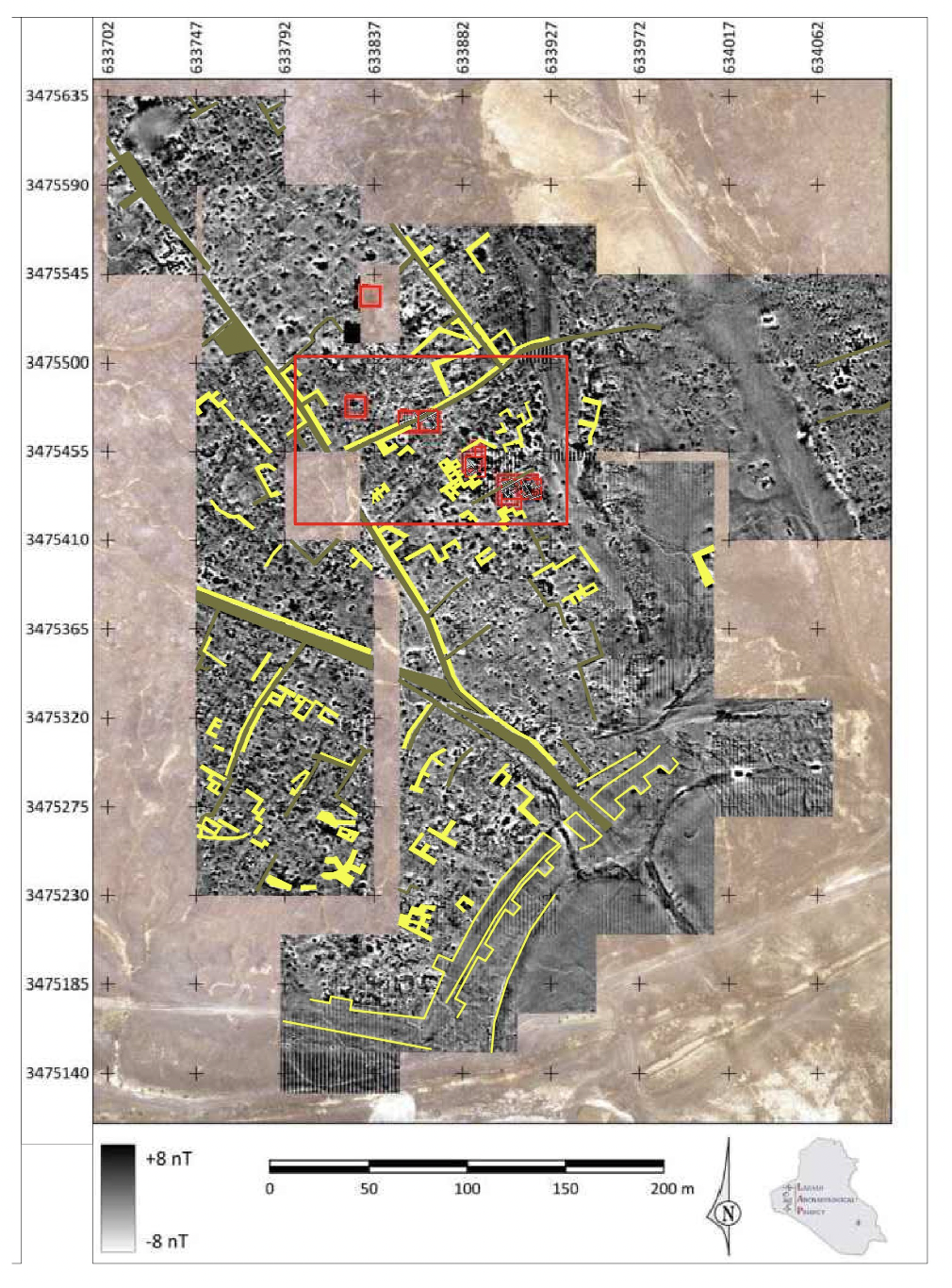
Previous surface surveys in Tell Al-Hiba have suggested that the majority of surface remains likely belong to a single period, the Early Dynastic III B (Carter 1985, 1989-90; Goodman et al. In press). Our objective for the 2023 and upcoming seasons is to cross-reference datasets from remote sensing with excavation findings to confirm the dating of these structures. This will help determine whether they are indeed mostly contemporaneous or if we are dealing with a complex layering of structures from multiple periods, spanning broadly from the Early Dynastic I to the end of the Early Dynastic III.
For more information, please visit our website: https://web.sas.upenn.edu/lagash/
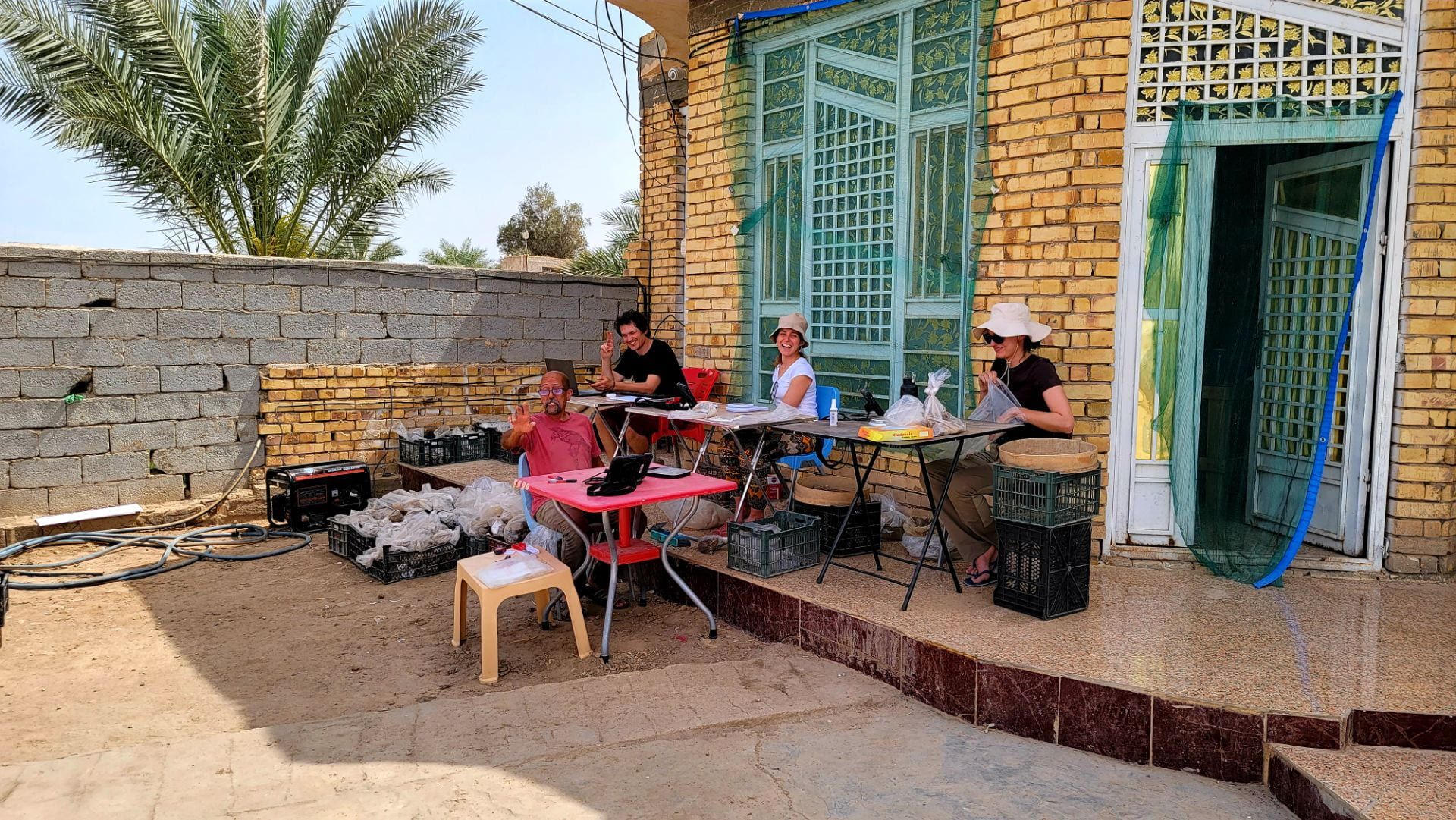
Marc Marín Webb is an architect and PhD candidate in Middle Eastern archaeology and history at the University of Pennsylvania. He has participated in archaeological and cultural heritage preservation projects in Syria, Iraqi Kurdistan, and southern Iraq. He has been collaborating in the LAP for two years now, contributing to the architectural analysis and aerial survey of the site.
